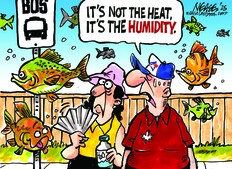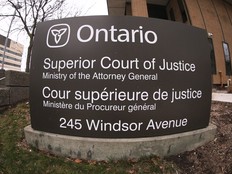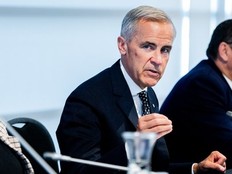GOLDSTEIN: ‘One and done’ isn’t working for the Conservatives

Article content
Before the Conservatives decide Pierre Poilievre’s political fate, they should consider how their “one and done” approach of dumping their leader after one election loss, ever since Stephen Harper was defeated in 2015, has worked out for them.
The answer is not well.
Andrew Scheer, who won the party’s leadership race in 2017, resigned following the 2019 election after failing to defeat then-prime minister Justin Trudeau and the Liberals, although he did reduce them from a majority to a minority government.
Erin O’Toole, who won the party leadership in 2020, resigned in 2022 after he was ousted by the Conservative caucus, following his defeat by Trudeau in the 2021 election, with the Liberals winning a second minority government.
The question facing Conservatives is whether they should now dump Poilievre, who lost to Mark Carney and the Liberals in the April 28 election, after blowing a double-digit lead in the polls and losing his own seat.
The Conservatives are going through the same process the Liberals did after then-party leader Paul Martin lost the 2006 election and the minority government he had led since 2004 to Harper, who won a Conservative minority.
The Liberals subsequently elected Stéphane Dion as party leader in 2006, who led them into the 2008 election and resigned after Harper won a second Conservative minority government.
The Liberals replaced Dion with Michael Ignatieff in 2009, who lost to Harper, who won a majority government, in 2011.
Ignatieff quit after the party fell to third place in the House of Commons in their worst showing ever — behind the Conservatives and NDP, who became the official opposition.
Ignatieff was replaced by Trudeau, elected Liberal leader in 2013, who in 2015 defeated Harper, boosting the Liberals from third place to a majority government.
Trudeau followed with election victories (albeit minority ones) in 2019 and 2021, before he resigned in January during an internal Liberal party revolt, ending with them electing Mark Carney, who won another minority government in the April 28 election, while significantly improving the Liberals’ popular vote and seat count.
So the choice now facing the Conservatives is whether Poilievre gives them the best chance of winning the next election, or whether they should seek a new leader in hopes he or she will repeat Trudeau’s electoral success in 2015.
This is in light of Poilievre’s failure to win this election, as had been widely expected, although he did significantly improve Conservative party standings and the popular vote.
In making that decision, the Conservatives should consider that their most successful and only prime minister in the last two decades was Harper, who was given a second chance to defeat the Conservatives after losing his first attempt in the 2004 election.
Entering that election, the Conservatives were competitive with the Liberals, with many polls projecting they would win a minority government.
But Harper’s campaign went off the rails in part because of controversial statements by Conservative candidates, and for a time, there was speculation Harper, disappointed with being defeated by the Liberals, would resign, although he had reduced the Liberals from a majority to a minority government.
In the end, Harper didn’t quit and went on to serve as prime minister for nine years, winning minority governments in 2006 and 2008 and a majority government in 2011.
In deciding what to do next, Conservatives should examine their own history because based on it, Poilievre merits a second chance.











Postmedia is committed to maintaining a lively but civil forum for discussion. Please keep comments relevant and respectful. Comments may take up to an hour to appear on the site. You will receive an email if there is a reply to your comment, an update to a thread you follow or if a user you follow comments. Visit our Community Guidelines for more information.